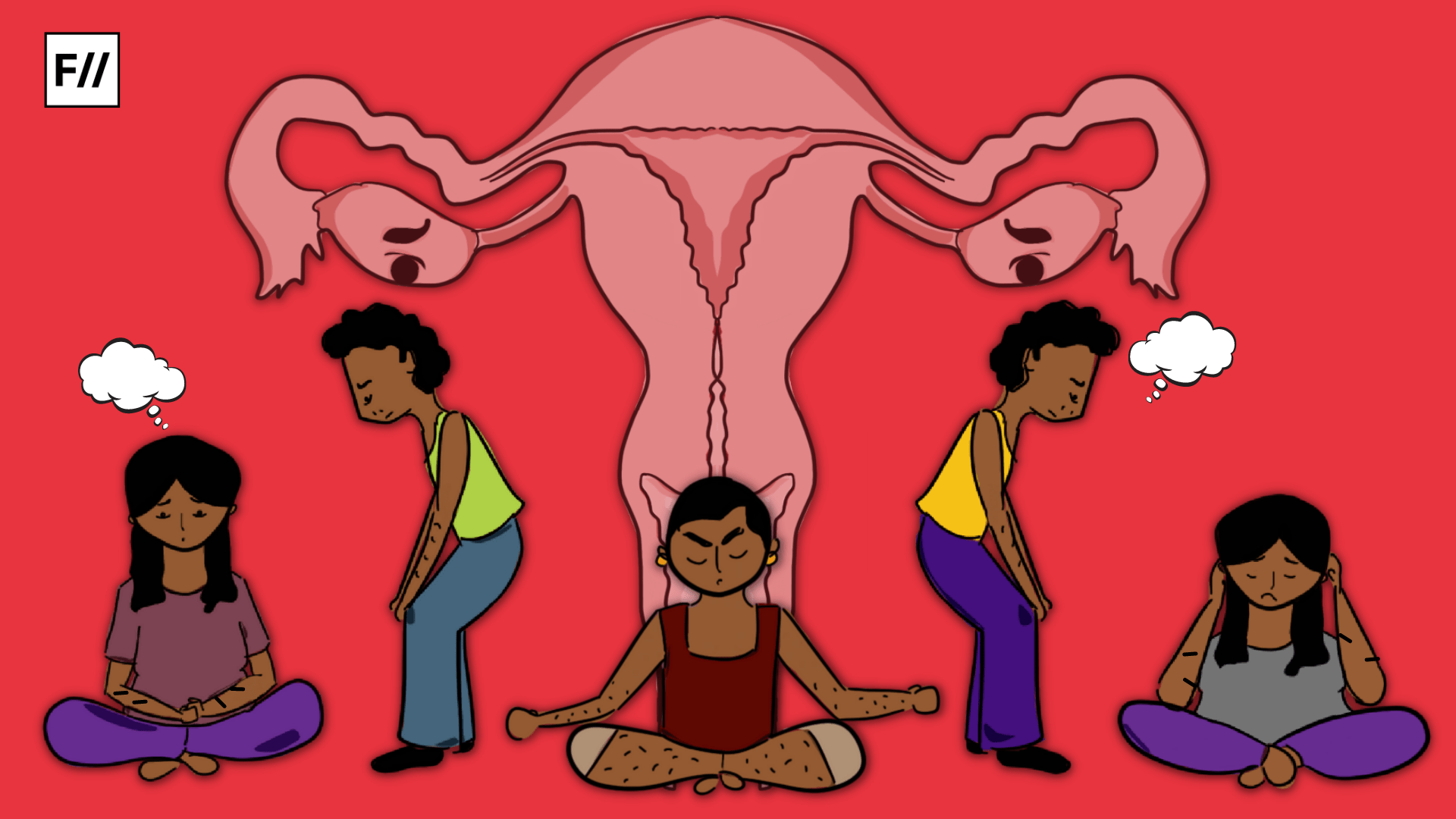Premenstrual dysphoric disorder (PMDD) refers to a group of emotional and physical symptoms that start a week or two before the start of the menstrual period. It affects around 1.8 to 5.8 per cent of menstruaters. PMDD is similar to premenstrual syndrome (PMS), but the symptoms, especially the emotional ones, are more severe. It’s a condition that is largely ignored due to lack of awareness and social stigma surrounding conversations on menstruation.
Premenstrual dysphoric disorder is a severe medical condition that needs attention and treatment. The symptoms of PMDD may often look like other medical problems such as a thyroid condition, depression, or anxiety disorder. Some common physical symptoms of PMDD include abdominal cramps, bloating, constipation, nausea, vomiting, pelvic heaviness or pressure and severe backache.
PMDD can manifest psychological symptoms like nervousness, agitation, insomnia, emotional sensitivity, poor self-image, anger, suicidal ideation and mood swings, among others. Some people with PMDD also experience fluid retention, respiratory difficulties, eye complaints, skin problems, neuro-vascular complaints as well as gastrointestinal troubles.

Premenstrual dysphoric disorder : Risks, causes and diagnostic criteria
While any menstruater can develop PMDD, some may be at increased risk. Menstruaters with a family history of PMDD and those with a personal or family history of depression, postpartum depression, or other mood disorders are more likely to develop PMDD.PMDD can arise at any time during a woman’s reproductive years, although the average age of onset is 26 years. Like PMS, the symptoms of PMDD begin in the late luteal phase of the menstrual cycle (after ovulation) and end shortly after menstruation begins.
While the specific cause of premenstrual dysphoric disorder is still not known, most experts believe that it is a response to the changes in hormone levels that occur during the menstrual cycle. Throughout the cycle, the body goes through a natural rise and fall in hormones like estrogen and progesterone. This can affect the levels of serotonin, a neurotransmitter that plays a significant role in the regulation of mood.
People with PMDD might also simply be more sensitive to these hormonal fluctuations. In 2017, researchers at the National Institute of Health discovered that people with PMDD have genetic changes that make their cells overreact to estrogen and progesterone, which may be responsible for the manifestation of the symptoms of PMDD.
PMDD is a chronic condition which cannot entirely be cured. But the symptoms are treatable and manageable. The duration and nature of treatments depend on the severity of the symptoms. Lifestyle changes, exercise, regulation of food and stress management are recommended, along with physician prescribed medication and therapy to address the emotional/psychological distress. Over-the-counter pain killers and vitamin supplements are also used to treat PMDD. In some cases, the doctor may prescribe birth control pills, antidepressants or hormonal medication

Though there is no specific test that doctors can use to diagnose PMDD, basic blood tests and a standard physical exam to rule out other potential causes of the symptoms is often relied on. To diagnose premenstrual dysphoric disorder, it is also important to rule off conditions like chronic fatigue syndrome, endometriosis, uterine fibroids, fibromyalgia and the like, which sometimes manifest symptoms similar to PMDD.
Also read: PMS And PMDD: What Do We Know And How Can We Support Others?
Monitoring symptoms is one of the most preferred methods of diagnosing PMDD. To diagnose a person with premenstrual dysphoric disorder, five or more of the following symptoms must be present over a year, during most menstrual cycles, starting seven to ten days before the period – mood swings, irritability or anger, depressed mood, feelings of hopelessness, anxiety or tension, reduced interest in daily activities, fatigue, erratic sleep, appetite changes as well as physical symptoms.
Premenstrual dysphoric disorder and Premenstrual Syndrome (PMDD and PMS)
Although PMDD may appear to be similar to PMS, the two are not the same. PMDD is a much more severe version of PMS, because its symptoms cause greater distress, and interfere in the menstruater’s day-to-day life. Both the physical and psychological symptoms of PMDD are much harder to deal with. For some menstruators, the severity of symptoms increases over time and lasts until menopause.
PMDD is a chronic condition which cannot entirely be cured. But the symptoms are treatable and manageable. The duration and nature of treatments depend on the severity of the symptoms. Lifestyle changes, exercise, regulation of food and stress management are recommended, along with physician prescribed medication and therapy to address the emotional/psychological distress. Over-the-counter pain killers and vitamin supplements are also used to treat PMDD. In some cases, the doctor may prescribe birth control pills, antidepressants or hormonal medication.
The stigma surrounding PMDD
There is a stigma surrounding PMDD which stems from the general stigmatisation of menstruation. Common problems of menstruation like cramps, mood swings and bloating are rarely acknowledged, and when they are, it is usually to justify misogynistic ideas of ascribing weakness to menstruating bodies. This leads to conditions relating to menstruation being invalidated.
Even severe menstrual distress is treated as a normal part of menstruation, thereby setting the social expectation that menstruators are supposed to put up with it without complaining. They are also discouraged from seeking help. We must address menstrual distress and acknowledge the severity of the experience and have more open conversations to ensure that conditions like PMDD are addressed before they jeopardise and damage the health of the person.
Also read: Premenstrual Syndrome: PMS Is Not About ‘Bad Moods’ That Can Be Dismissed Easily
Featured Image: Ritika Banerjee for Feminism In India
About the author(s)
Jyni Verma is a writer with a focus on gender, intersectionality, social justice issues and cultural analysis. They are currently pursuing their masters in sociology at Jamia Millia Islamia.





